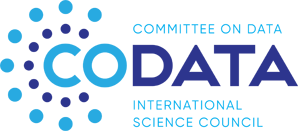
Natural disasters have cost us $162 billion this year.
The first half of 2025 marks a new inflection point in the global climate risk landscape. According to leading professional services firm Aon, global insured losses from natural catastrophe events reached $100 billion, the second-highest 1H total on record, surpassed only by the $140 billion seen in 2011.
Largely driven by Los Angeles wildfires and a series of severe convective storms across the US, the losses highlight the growing financial impact of climate-related weather volatility alongside growing exposure in event-prone areas. The moment presents a powerful opportunity for the insurance industry to not only adapt to rising climate volatility, but to lead the way – driving innovation, resilience and proactive solutions that redefine how risk is understood and managed in a changing world.
The Global Heatwave Crisis: What It Means for the Next Generation
2024 ranked as the hottest year on record. Global average temperature reached 1.55°C above pre-industrial levels, according to the World Meteorological Organization (WMO), and every year from 2015 to 2024 is now in the top ten hottest years ever recorded. Scientists also reported a sharp rise in humid heat days, which strain the body far more than dry heat. These are not statistical outliers. They are the new baseline conditions that today’s children will inherit.
The global heatwave crisis is no longer a future problem—it is here, and its impact is measurable across health, education, food systems, economies, and urban living. This article outlines what the crisis means for the next generation, using verified data from global agencies and peer-reviewed research, while mapping practical solutions for governments, schools, families, and businesses.
Europe confronts an unprecedented wildfire season – What can we do to prevent them?
Europe is experiencing what may become one of its most devastating wildfire seasons on record. Since the beginning of 2025, more than 450,000 ha have burned — this is more than double the area burnt in the same period last year, with severe impacts on landscapes, cities, and communities that have spread with alarming speed and severity.
From the Mediterranean to the Balkans, relentless heat and drought have fuelled fierce infernos. In Greece, Spain, Portugal, Turkey, Albania, Montenegro, Cyprus, the UK, France, Italy, and elsewhere, communities are grappling with waves of fire, displacement, and emergency response. While wildfires are common in the summer, this is more than a seasonal crisis. Climate-driven heatwaves, prolonged drought, high wind patterns, and abundant dry vegetation are converging to create a “new normal” of extreme wildfires.
Triple whammy: how 3 types of drought crippled southern Australia this year
Soaking mid-winter rains have brought some relief to drought-stricken farms and rural towns across southern Australia, but the crisis is not over yet. And there’s more to this challenging episode than you might think. As climate scientists, we see more than a single drought. Rather, it’s a trilogy of droughts. Across southern Australia over the past six months, three interconnected phases have unfolded in rapid succession: flash drought, green drought and fodder drought. Each phase brings its own challenges. Together, they reveal the complex and cascading nature of climate stress in southern Australia.
Why the UK needs more proactive heat risk management
When the UK recorded temperatures above 40°C for the first time in July 2022, it marked a clear signal: extreme heat is no longer a distant or unlikely threat. In 2025, the Met Office warned that, due to climate change, such heatwaves are now becoming the norm, underscoring the urgent need for preparedness. Yet, as our new study published in Earth’s Future shows, the country’s readiness to manage heat risk remains fragmented and reactive, focusing on immediate impacts rather than the complex interdependencies that amplify these risks.
Read the full newsletter here
